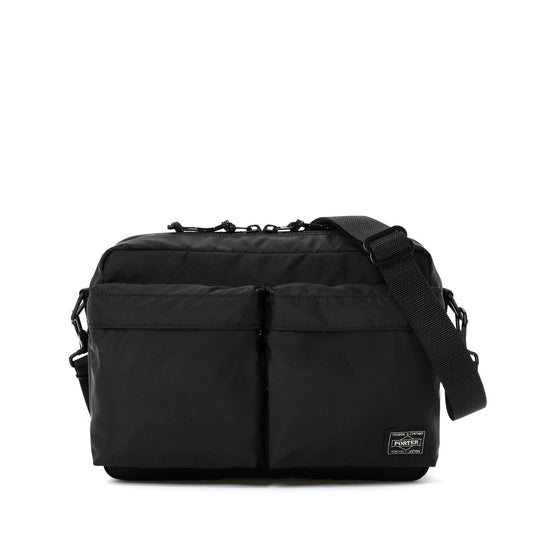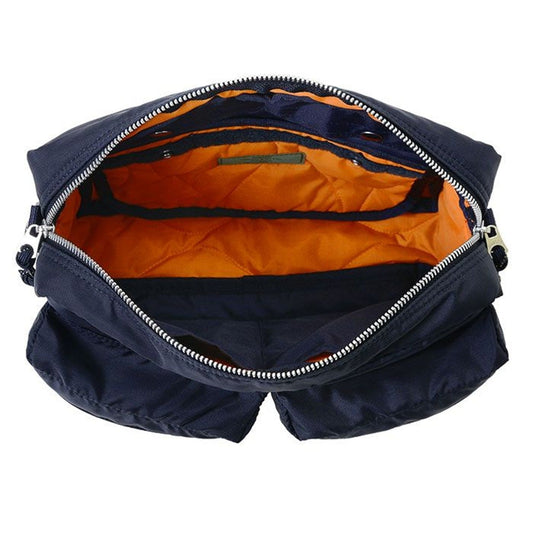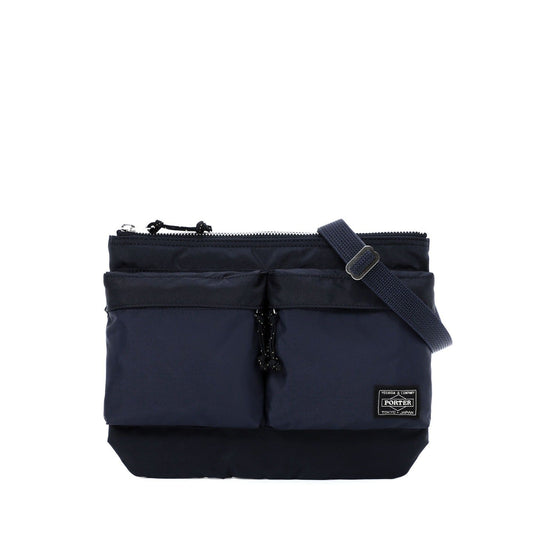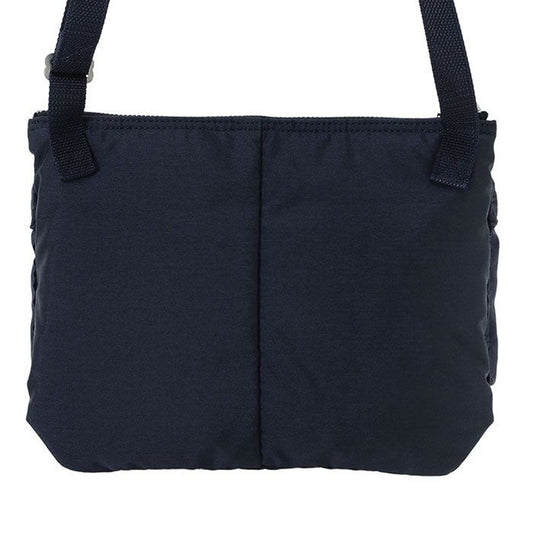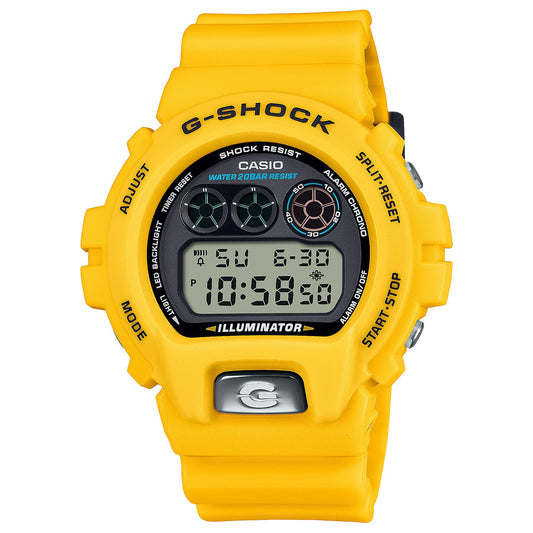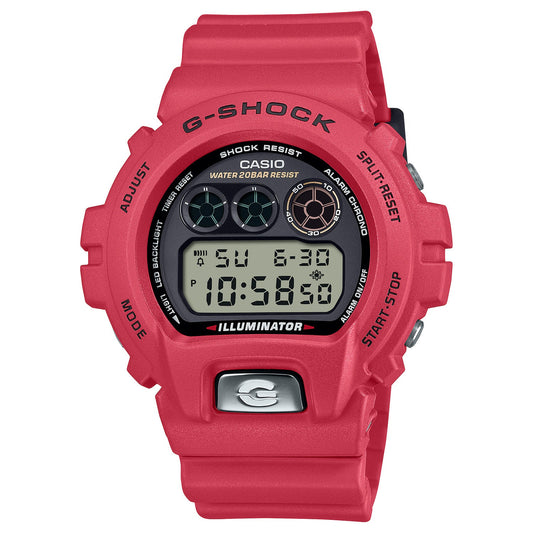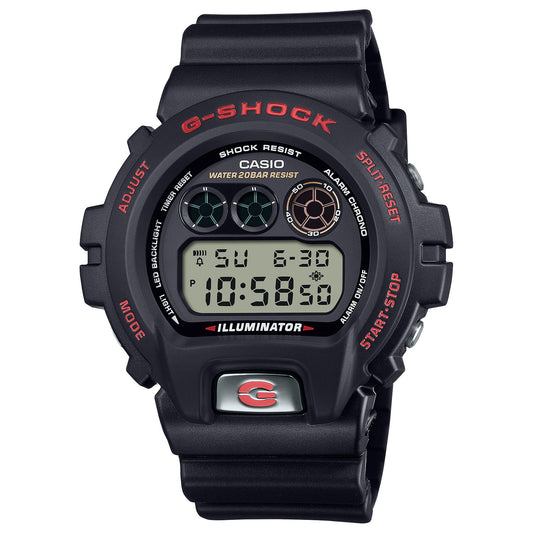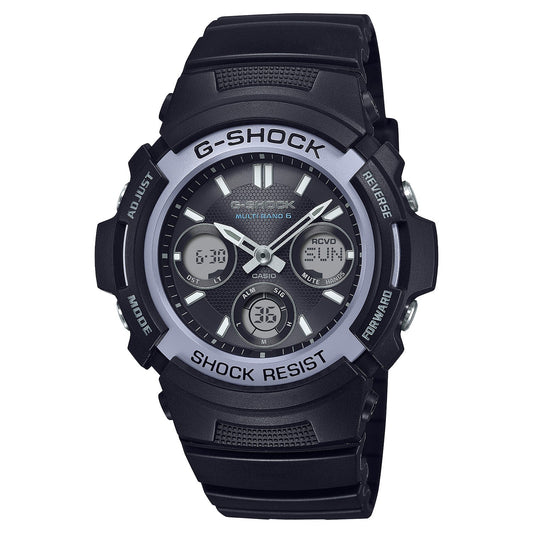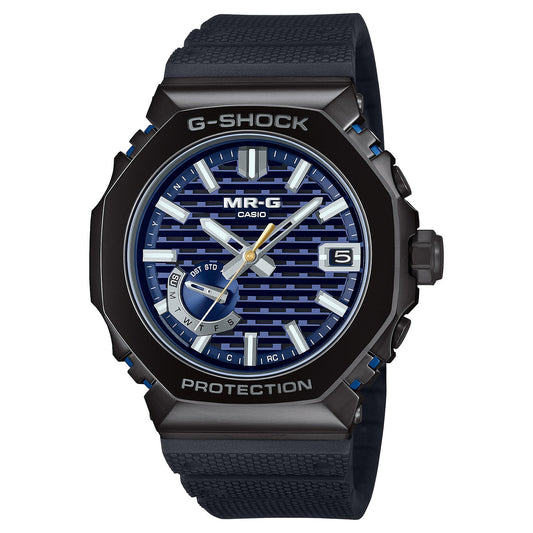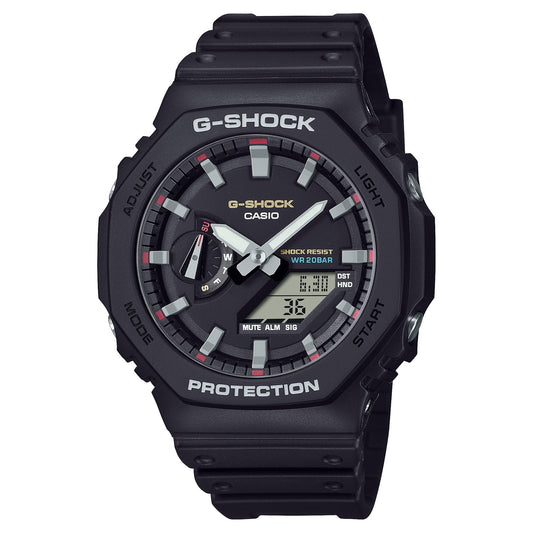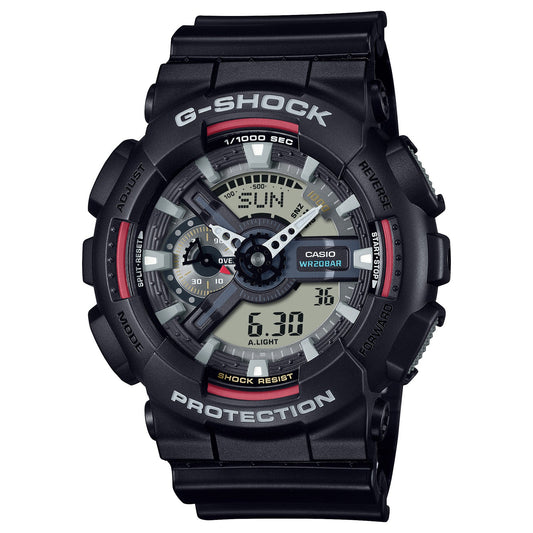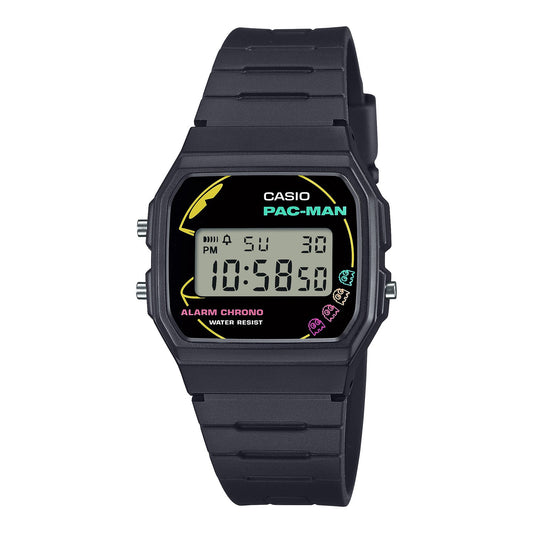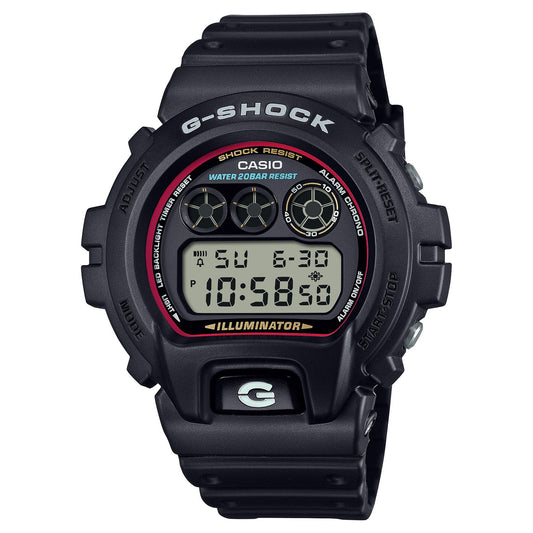-
Vendor: CASIO
Casio G-Shock Master of G-Air Gravity Master GRB300RY-1A9
Whatever you’re doing, wherever you are — the G-SHOCK Master of G line has your back. For total support in the harshest environments, this GRAVITYMASTER watch delivers peak performance in punishing conditions in air. It features bold black to exude toughness and a band...- $425.00 CAD
- $425.00 CAD
- Unit price
- per
-
Vendor: CASIO
Casio Digital AE1200WH-5AV
Casio Digital AE1200WH-5AV- $40.00 CAD
- $40.00 CAD
- Unit price
- per
-
Vendor: CASIO
Casio G-Shock x ONE OK ROCK 2100 Series GM2100TTTR-8A
From G-SHOCK, the watch that has continuously evolved in pursuit of ultimate toughness since its debut in 1983, comes a special collaboration model celebrating the 20th anniversary of ONE OK ROCK, one of Japan’s most iconic rock bands. The base model is the GM-2100,...- $425.00 CAD
- $425.00 CAD
- Unit price
- per
-
Vendor: CASIO
Casio G-Shock G-Steel 110 Series GM110D-8A
Introducing the GM-110D, an updated take on the ever-popular large case analog-digital G-SHOCK with metal bezel and band. Precision forging, cutting, and polishing, and even special molding techniques, all go into crafting a metal bezel featuring a rugged, high-impact design, for a solid construction...- $425.00 CAD
- $425.00 CAD
- Unit price
- per
-
Vendor: CASIO
Casio G-Shock 30th Anniversary 6900 Yellow DW6900TR-9
Confident, tough, ready for anything — Make a bold statement with the 30th anniversary lineup of the ever-popular 6900 line, one of the iconic G-SHOCK styles. The DW-6900TR, dressed in the black of the DW-6900H —the first color variation model in the 6900 line...- $165.00 CAD
- $165.00 CAD
- Unit price
- per
-
Vendor: CASIO
Casio G-Shock 30th Anniversary 6900 Red DW6900TR-4
Confident, tough, ready for anything — Make a bold statement with the 30th anniversary lineup of the ever-popular 6900 line, one of the iconic G-SHOCK styles. The DW-6900TR, dressed in the black of the DW-6900H —the first color variation model in the 6900 line...- $165.00 CAD
- $165.00 CAD
- Unit price
- per
-
Vendor: CASIO
Casio G-Shock 30th Anniversary 6900 Black DW6900TR-1
Confident, tough, ready for anything — Make a bold statement with the 30th anniversary lineup of the ever-popular 6900 line, one of the iconic G-SHOCK styles. The DW-6900TR, dressed in the black of the DW-6900H —the first color variation model in the 6900 line...- $165.00 CAD
- $165.00 CAD
- Unit price
- per
-
Vendor: CASIO
Casio G-Shock AWG-100 M100 Series Black AWGM100FP-1A2
From G-SHOCK, which continues to evolve in pursuit of toughness, comes the 2025 model of the popular "Fire Package" series, aimed at people who are taking on new challenges in new fields and new worlds. The base color is black with a cool blue...- $215.00 CAD
- $215.00 CAD
- Unit price
- per
-
Vendor: CASIO
Casio MRG-B2100 Series MRGB2100R-2A
Immerse yourself in the blue serenity of the stunning MRG-B2100R, a proud addition to the MR-G line, the pinnacle of the G-SHOCK brand. Indulge your appreciation of luxurious quality with a slim G-SHOCK MR-G crafted with state-of-the-art metals and exquisite traditional Japanese finishes. The...- $5,100.00 CAD
- $5,100.00 CAD
- Unit price
- per
-
Vendor: CASIO
Casio x Charles Darwin Foundation Analog-Digital 2100 GAB2100CD-1A7
Show your love of the Galápagos and the Charles Darwin Foundation with a G-SHOCK inspired by animals living in these gorgeous islands. This is our third collaboration with the Charles Darwin Foundation, an organization that engages in environmental conservation activities in the Galápagos Islands,...- $235.00 CAD
- $235.00 CAD
- Unit price
- per
-
Vendor: CASIO
Casio x Charles Darwin Foundation Analog-Digital 2100 GAB2100CD-1A4
Show your love of the Galápagos and the Charles Darwin Foundation with a G-SHOCK inspired by animals living in these gorgeous islands. This is our third collaboration with the Charles Darwin Foundation, an organization that engages in environmental conservation activities in the Galápagos Islands,...- $235.00 CAD
- $235.00 CAD
- Unit price
- per
-
Vendor: CASIO
Casio G-Shock Analog-Digital 2100 GA2100RL-1A
A simple and streamlined watch with octagonal bezel. The original color scheme is faithfully reproduced with touches of G-SHOCK red, representing the passion to take on challenges; blue, symbolizing excellent water resistance; and yellow, signifying outstanding shock resistance.- $140.00 CAD
- $140.00 CAD
- Unit price
- per
-
Vendor: CASIO
Casio G-Shock Analog-Digital 110 GA110RL-1A
A stand-out with distinctive large case. The original color scheme is faithfully reproduced with touches of G-SHOCK red, representing the passion to take on challenges; blue, symbolizing excellent water resistance; and yellow, signifying outstanding shock resistance.- $180.00 CAD
- $180.00 CAD
- Unit price
- per
-
Vendor: CASIO
Casio x PAC-MAN Vintage Collection F91WPC-1A
Presenting a whole collection of special collaborations to celebrate 50 years of Casio watches and get you ready for 45th PAC-MAN anniversary in 2025. With playful designs and a nostalgic touch, this lineup brings to life the world of PAC-MAN, the ever-popular game from...- $85.00 CAD
- $85.00 CAD
- Unit price
- per
-
Vendor: CASIO
Casio G-Shock Digital 6900 DW6900RL-1
A timeless cultural icon loved by all. The original color scheme is faithfully reproduced with touches of G-SHOCK red, representing the passion to take on challenges; blue, symbolizing excellent water resistance; and yellow, signifying outstanding shock resistance.- $140.00 CAD
- $140.00 CAD
- Unit price
- per
-
Vendor: CASIO
Casio G-Shock Digital 5600 DW5600RL-1
An ever-popular classic that carries on the very first G-SHOCK design. The original color scheme is faithfully reproduced with touches of G-SHOCK red, representing the passion to take on challenges; blue, symbolizing excellent water resistance; and yellow, signifying outstanding shock resistance.- $140.00 CAD
- $140.00 CAD
- Unit price
- per
-
Vendor: CASIO
Casio x PAC-MAN Vintage Collection CA53WPC-1B
Presenting a whole collection of special collaborations to celebrate 50 years of Casio watches and get you ready for 45th PAC-MAN anniversary in 2025. With playful designs and a nostalgic touch, this lineup brings to life the world of PAC-MAN, the ever-popular game from...- $115.00 CAD
- $115.00 CAD
- Unit price
- per
-
Vendor: CASIO
Casio x PAC-MAN Vintage Collection ABL100WEPC-1B
Presenting a whole collection of special collaborations to celebrate 50 years of Casio watches and get you ready for 45th PAC-MAN anniversary in 2025. With playful designs and a nostalgic touch, this lineup brings to life the world of PAC-MAN, the ever-popular game from...- $180.00 CAD
- $180.00 CAD
- Unit price
- per
-
Vendor: CASIO
Casio x PAC-MAN Vintage Collection A168WEPC-7A
Presenting a whole collection of special collaborations to celebrate 50 years of Casio watches and get you ready for 45th PAC-MAN anniversary in 2025. With playful designs and a nostalgic touch, this lineup brings to life the world of PAC-MAN, the ever-popular game from...- $115.00 CAD
- $115.00 CAD
- Unit price
- per
-
Vendor: CASIO
Casio G-Shock G-Steel GST-B400 Silver Watch GST-B400CX-1A
Welcome in the Year of the Snake with a special edition G-STEEL crafted at the intersection of metal and resin. Celebrate 2025 with innovative form and design inspired by the ancient ouroboros. This slim GST-B400 features an ouroboros motif, the ancient auspicious symbol of...- $525.00 CAD
- $525.00 CAD
- Unit price
- per
Recently Viewed Products
- Choosing a selection results in a full page refresh.












































































































